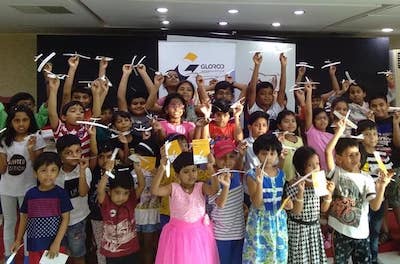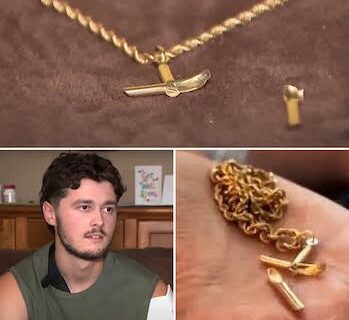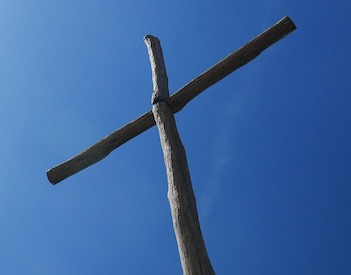Interested to pursue a hobby that is a century old, during this lockdown? It is so challenging and fun that hardly anyone who takes it up, ever gives it up – aeromodelling. A hobby where we design and build small flying models of aircrafts. The fun part is watching our handmade creations fly high in the skies, doing all kinds of unimaginable stunts, just like in any real life aerobatic competitions.
Aeromodelling as a hobby began in the early part of the 20th century, when people were so fascinated by aircrafts, that they started making small prototype models both for assessing the airworthiness of their designs, as well for recreation. These were all wooden models made using a wood which weighed light, but was immensely strong – Balsa wood. Balsa wood is very easy to cut with a hobby knife as well as easy to polish with a sandpaper. As time passed, with greater technological advancements, miniaturisation became easy and miniature engines were developed in 1920s & 1930s to power these small airplanes, using petrol or methanol as fuel. In the forties and fifties, with electronics becoming popular, radio control systems were developed for aero models. That was, in a way, the beginning of what we call robotics, today. The actuators/servos we now use in robotics were then developed to move the flaps on aero models. Towards the eighties, gyroscopes were developed for flight control systems in aeromodelling, thus laying the foundation for the present-day drones. Similarly these same control systems were used to develop RC cars, boats, ships and trains too. In a way, the smart phone technology in use today, also have its roots in motion sensors developed for aero models. So if you really want to be tech savvy, don’t build drones, learn aeromodelling.
The skills developed for designing and hand building an aircraft brings together a knowledge of mathematics, physics and engineering. The wide range of tools and testing equipment in use for aeromodelling is the kind that is reminiscent of a production line, that demands precision at every stage of assembly. If not for aeromodelling and the range of technologies developed for it, modern day robotics would have been unthinkable.
As a kid I loved to make my own toys; the only problem was I wanted all of them to be working on batteries. In the India of the early 80’s, growing up in the then most modern and planned city of India – Jamshedpur, I had the liberty of living out my dreams. Not many could afford a battery-operated toy and neither did I have any. Thus began my life of ‘jugaad engineering’ at the age of 7 with a pencil battery torch. Though aircrafts were always something that took my breath away, I first sensed hope for me when at age of ten, my close friend told me about a hobby called aeromodelling. He told me that a shop in Calcutta named India Hobby Centre had all accessories and even small, working toy engines specifically designed for small aircrafts. The year was 1985. I remember the excitement drove me straight to the school library in search for more knowledge on aircrafts and aeromodelling. Though I was clueless about which book in the 40,000 book-rich library in Loyola School was good for me, once back from school I would take out my treasure chest, a cardboard box…actually more of a ‘kabaadi box’ which had all the metal and plastic waste collected at home. I would never let my mother throw away any scrap – I wanted those tin cans, plastic and glass bottles screws for my work. By the age of ten, I had found my own ways of making small working models of toys of my liking. Some kind hearts had given me toy and tape recorder motors which were my Kohinoor diamonds. With all these, I set forth to build my first airplane. I had some heartbreaking experiences – none of my aircrafts moved a millimetre ahead. It took 3 years for me to make my first airplane that would move on its own power. It would just taxi on the ground and not fly.
Finally, many years later, when I had collected enough pocket money to buy balsa glider kits from India Hobby Centre in Calcutta, I formally started my aeromodelling hobby. Thanks to the Internet, I could import more from abroad. Since importing these kits cost a lot, I desired to manufacture these in India. That is how in 2005, I set out to launch my aeromodelling business and in 2010 registered it as a company. Since then Glorod Avionics has not just been a manufacturer but an importer of some of the world’s best aeromodelling tools and accessories to India. In the recent past, we also launched aeromodelling workshops by the name Junior Woodies.
One dream of mine – to form an aeromodelling and RC Club for my city of Kochi was fulfilled with the signing of an MOU with St. Albert’s College in Ernakulam, on July 16th, 2020.
By Sheen V Thomas
 Sheen qualified in Electronics & Telecommunications Engineering from IETE, New Delhi. Glorod Avionics was founded by Sheen and his wife Annie, to design, develop and create RC model aircrafts and UAVs. The company supplies products to engineering colleges, CSIR, Air NCC and the Indian Navy. They are gearing up to launch a host of new products for modellers of RC cars, trucks, boats, ships and trains: www.glorodavionics.com
Sheen qualified in Electronics & Telecommunications Engineering from IETE, New Delhi. Glorod Avionics was founded by Sheen and his wife Annie, to design, develop and create RC model aircrafts and UAVs. The company supplies products to engineering colleges, CSIR, Air NCC and the Indian Navy. They are gearing up to launch a host of new products for modellers of RC cars, trucks, boats, ships and trains: www.glorodavionics.com













